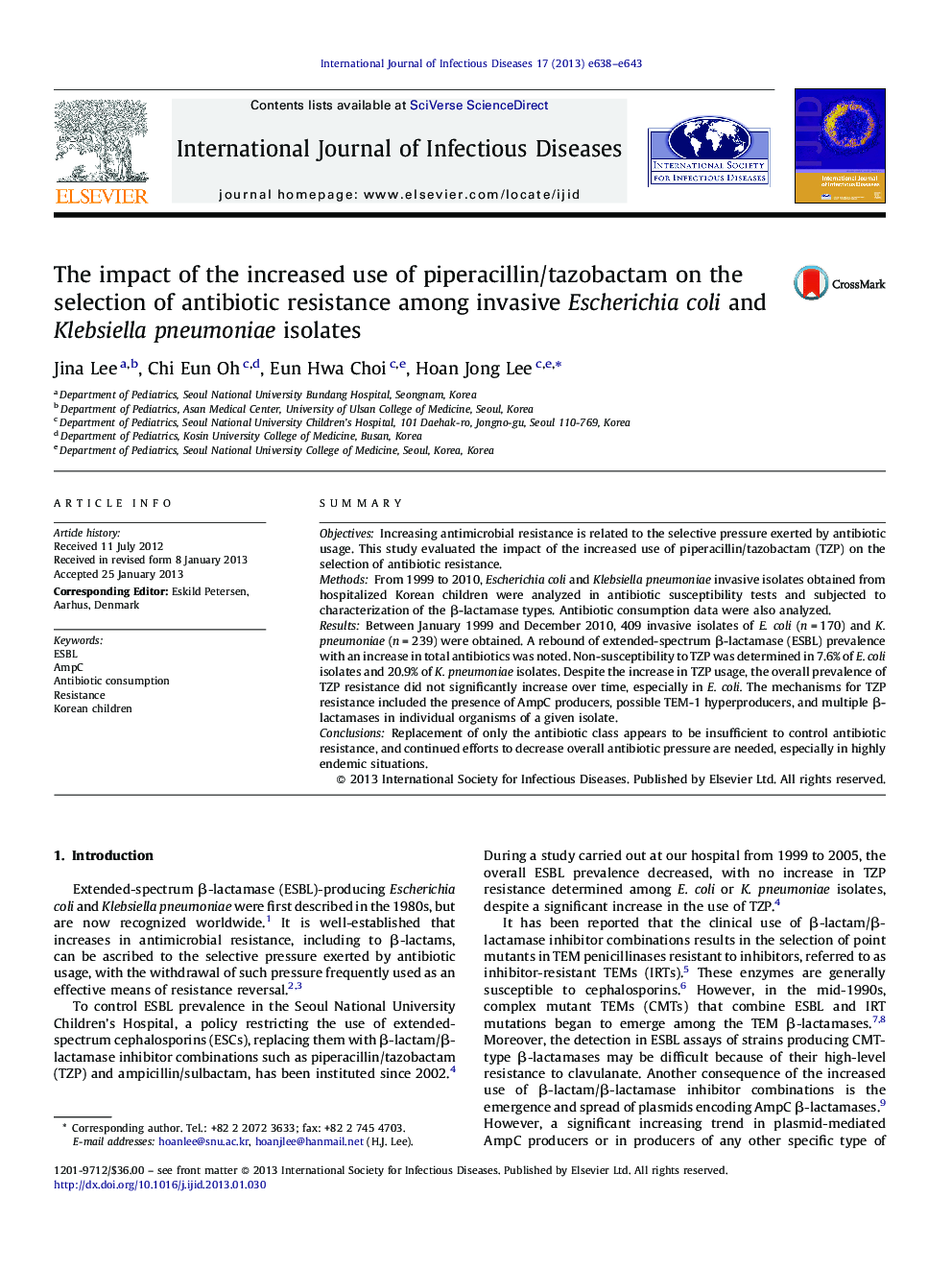| Article ID | Journal | Published Year | Pages | File Type |
|---|---|---|---|---|
| 3362796 | International Journal of Infectious Diseases | 2013 | 6 Pages |
SummaryObjectivesIncreasing antimicrobial resistance is related to the selective pressure exerted by antibiotic usage. This study evaluated the impact of the increased use of piperacillin/tazobactam (TZP) on the selection of antibiotic resistance.MethodsFrom 1999 to 2010, Escherichia coli and Klebsiella pneumoniae invasive isolates obtained from hospitalized Korean children were analyzed in antibiotic susceptibility tests and subjected to characterization of the β-lactamase types. Antibiotic consumption data were also analyzed.ResultsBetween January 1999 and December 2010, 409 invasive isolates of E. coli (n = 170) and K. pneumoniae (n = 239) were obtained. A rebound of extended-spectrum β-lactamase (ESBL) prevalence with an increase in total antibiotics was noted. Non-susceptibility to TZP was determined in 7.6% of E. coli isolates and 20.9% of K. pneumoniae isolates. Despite the increase in TZP usage, the overall prevalence of TZP resistance did not significantly increase over time, especially in E. coli. The mechanisms for TZP resistance included the presence of AmpC producers, possible TEM-1 hyperproducers, and multiple β-lactamases in individual organisms of a given isolate.ConclusionsReplacement of only the antibiotic class appears to be insufficient to control antibiotic resistance, and continued efforts to decrease overall antibiotic pressure are needed, especially in highly endemic situations.
